Taking place from October 1 through November 3 at Tokyo Metropolitan Theatre in Ikebukuro and the surrounding area. Featured works include Toshiki Okada’s latest production, outdoor performance choreographed by the texts, and the Japan premiere of a collaboration between Damien Jalet and Kohei Nawa, among others.
Press conference Front row from left: Shin Hanagata, Toshiki Okada (playwright, novelist, artistic director of theater company chelfitsch), Asako Kikukawa (representative of Utau-Hahagokoro); Back row from left: Yoko Yamaguchi, Ikuko Sekita (director of [SEKITA IKUKO]), Kuro Tanino (director of NIWA GEKIDAN PENINO, resident playwright and director), Toshihiko Kasai (YOU BALANCE director)
“Autumn Meteorite 2025 Tokyo” announces program
The performing arts festival Autumn Meteorite 2025 Tokyo will be held from October 1 to November 3, at the Tokyo Metropolitan Theatre and other locations in the Ikebukuro area.
Autumn Meteorite 2025 Tokyo is an ambitious performing arts festival built around three core pillars: creating new art, promoting artists and works internationally, and personnel development in the performing arts. Beyond presenting cutting-edge domestic and international works, the festival serves as a catalyst for developing performing arts artists and production professionals who can make their mark internationally. Leading this vision is acclaimed playwright, novelist, and director of theater company chelfitsch Toshiki Okada, whose groundbreaking work has earned international recognition for its unique exploration of the relationship between language, body, and contemporary social dynamics.
Explaining the festival’s title, Okada shared his conceptual vision in the following message:
“In this context, meteorite is a metaphor. It represents something that does not exist here in front of us, something totally different from what we are used to. These foreign elements come here to us—us who already exist in this place—and our paths cross. We are introduced to new forms and frameworks of thinking. Our senses and minds are stimulated in unfamiliar ways. It is this ambition of ours of wanting to become such a phenomenon that my team and I have incorporated into this name, Autumn Meteorite.”
 “Autumn Meteorite 2025 Tokyo” key visual
“Autumn Meteorite 2025 Tokyo” key visual
Throughout the festival, “meteorite” events will create opportunities for audiences to engage directly with artists while challenging conventional notions of theater accessibility and fundamentally questioning both our perception of reality and the very essence of live performance.
The festival unfolds across three interconnected streams: “Performance Programs” featuring innovative works by artists from Japan and abroad, “Non-Performance Programs” including lectures and workshops, and a comprehensive “Hello and Welcome (Attendee Support)” designed to ensure the festival is genuinely enjoyable and accessible to all visitors.

Speaking at the July 23 press conference, Okada outlined his vision for inclusivity: “Through our ‘Hello and Welcome’ system, we’re prioritizing and enhancing accessibility. Our goal is to transform people who have never attended theater—or believed it wasn’t for them—into active participants.”
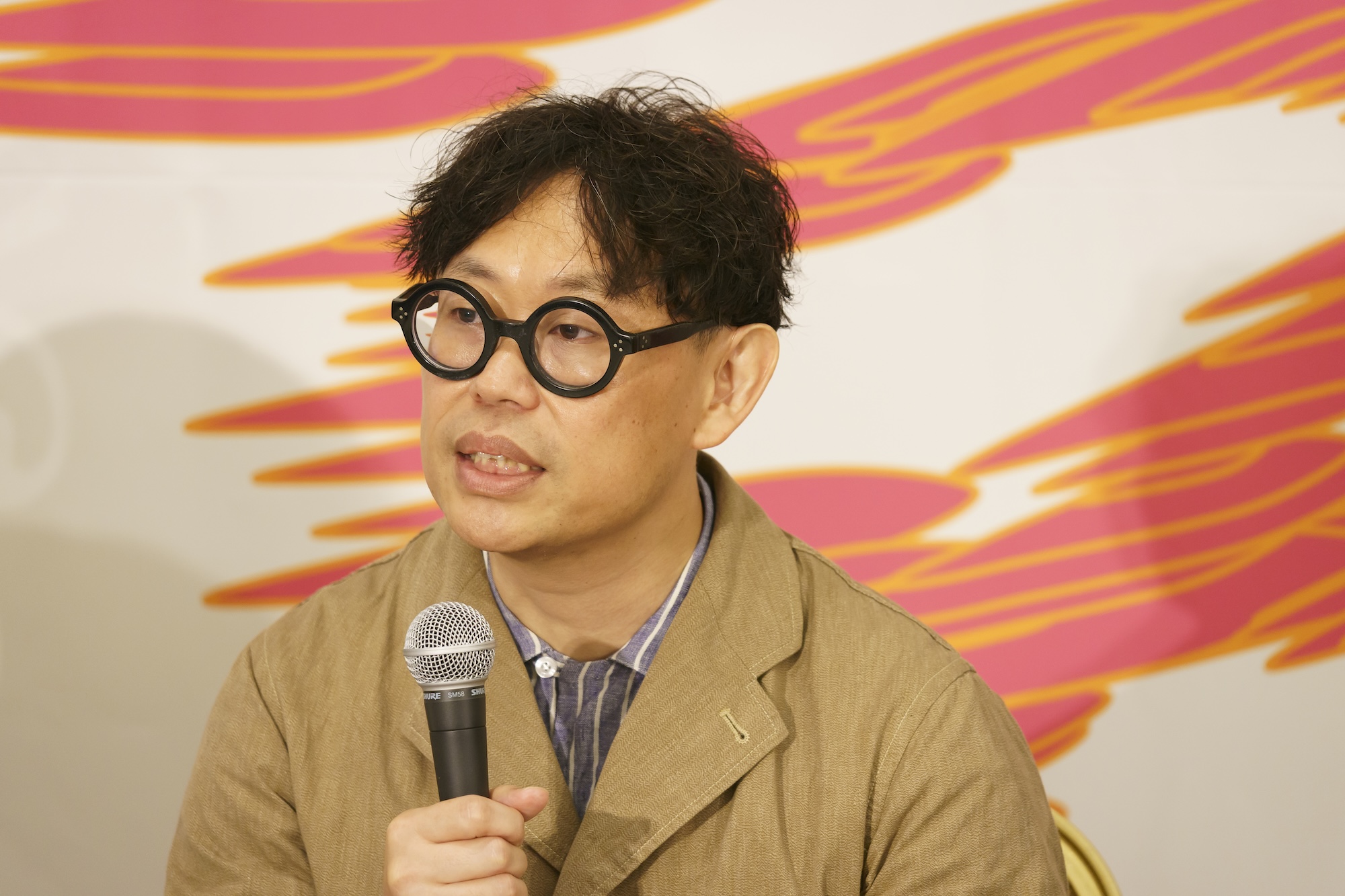 Toshiki Okada Photo by Ryohei TomitaOpening program: outdoor performance bringing words to life
Toshiki Okada Photo by Ryohei TomitaOpening program: outdoor performance bringing words to life
Kicking off the festival, Another Shape of Reality / Shape of Another Reality transforms the plaza outside Tokyo Metropolitan Theatre into a stage for Okada’s latest conceptual experiment. This outdoor performance piece brings together an eclectic creative team: Akutagawa Prize-winning novelist Saou Ichikawa (author of “Hunchback”), writer-YouTuber Da Vinci Osorezan (Yu Shinada), and renowned choreographer Natsuko Tezuka each contribute instructions that guide the performers’ actions in Ikebukuro’s public space, with DJ/producer okadada providing the music.
 Opening program “Another Shape of Reality / Shape of Another Reality” Photo by Satoshi NishizawaOkada’s latest: where dance meets “welcome”
Opening program “Another Shape of Reality / Shape of Another Reality” Photo by Satoshi NishizawaOkada’s latest: where dance meets “welcome”
Okada’s compelling new dance-theater piece, Dance Jurors’ Dance, takes its conceptual foundation from philosopher Kiyokazu Washida’s essay Shoyuron [A theory of property] (2024), which examines the concept of ownership. The performance will fully embrace “relaxed performance” techniques—an inclusive approach that welcomes individuals who are sensitive to sound and light stimuli, including young children and people with developmental disabilities.
 “Dance Jurors’ Dance” Photo by Yusei Fukuyama
“Dance Jurors’ Dance” Photo by Yusei Fukuyama
“Rehearsals have begun, but many of the performers are dancers, so speaking text is a challenge for them. We’re exploring and experimenting with new ways of combining spoken text and physical movement. While this is something I’ve done before, I sense we’re starting something with a completely different quality,” Okada explains.
Performance programs and international voices
Among the festival’s international highlights, TMT Autumn Selection presents renowned Kuranosuke Sasaki in the solo work Jonah, an ambitious co-production between Tokyo Metropolitan Theatre and Romania’s prestigious Theatre National Radu Stanca Sibiu. Sasaki embodies a solitary figure fighting to escape existential darkness in pursuit of freedom.
 “Jonah”
“Jonah”
The long-standing Sheffield-based company Forced Entertainment brings their playful piece Signal to Noise, featuring six performers lip-syncing to AI-generated voices. The work creates a strange and compelling world that blurs the boundaries between what is human and non-human, what is real life and just pretense.
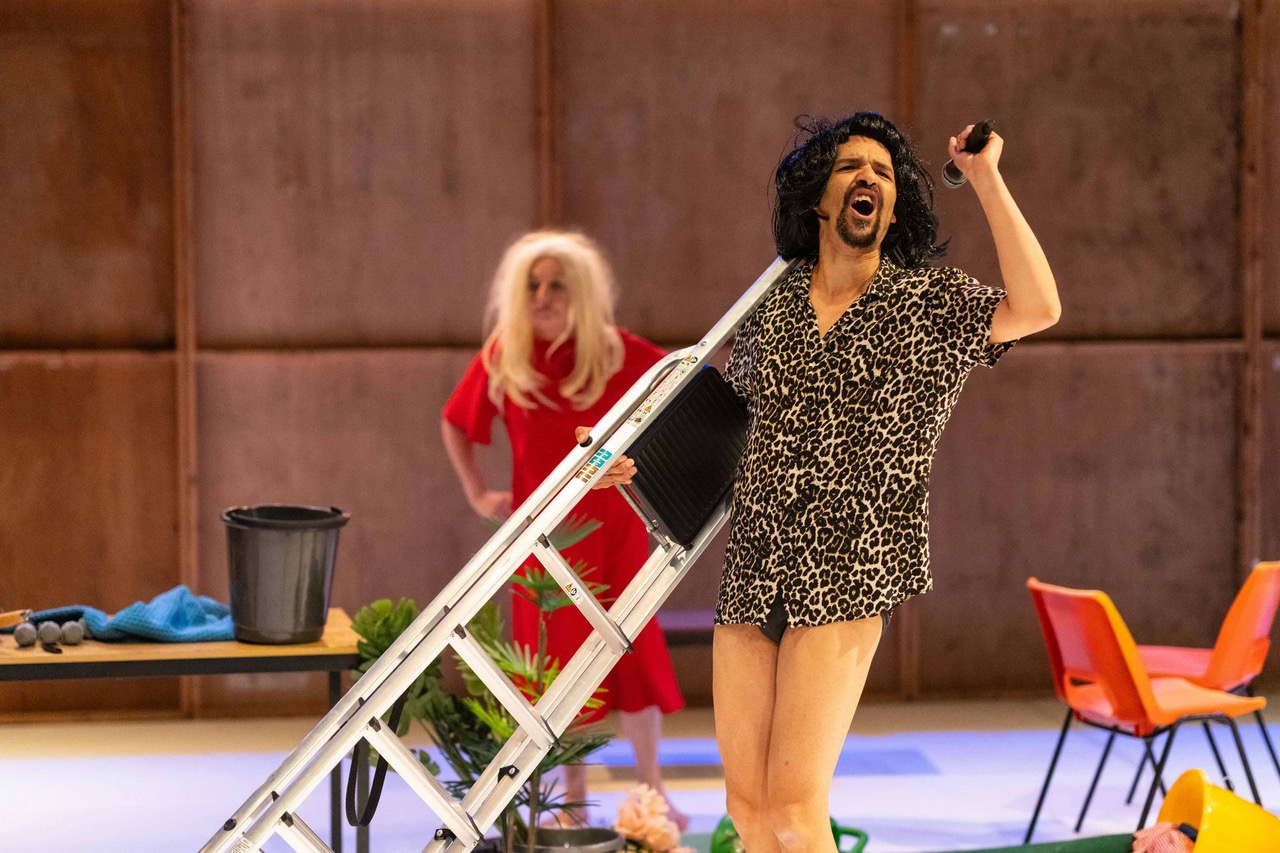 “Signal to Noise” © Hugo Glendinning
“Signal to Noise” © Hugo Glendinning
Based on Yasunari Kawabata’s novel The House of the Sleeping Beauties, The Bathhouse of Honest Desires is a Japanese-Taiwanese co-production by Shakespeare’s Wild Sisters Group and NIWA GEKIDAN PENINO. The production emerges from the creative partnership between directors Kuro Tanino and Chia-Ming Wang, reimagining Kawabata’s novel as what Tanino describes as “an SM club for men who died in war.”
 “The Bathhouse of Honest Desires” © Hsuan-Lang Lin, provided by National Theater & Concert Hall
“The Bathhouse of Honest Desires” © Hsuan-Lang Lin, provided by National Theater & Concert Hall
New York and Los Angeles-based artist Faye Driscoll brings her critically acclaimed Weathering, which captivated audiences at its 2023 New York premiere. Drawing on the tradition of tableau vivant—where performers recreate paintings as living sculptures—Driscoll creates an immersive journey that invites audiences to experience our ever-changing, weathering world.
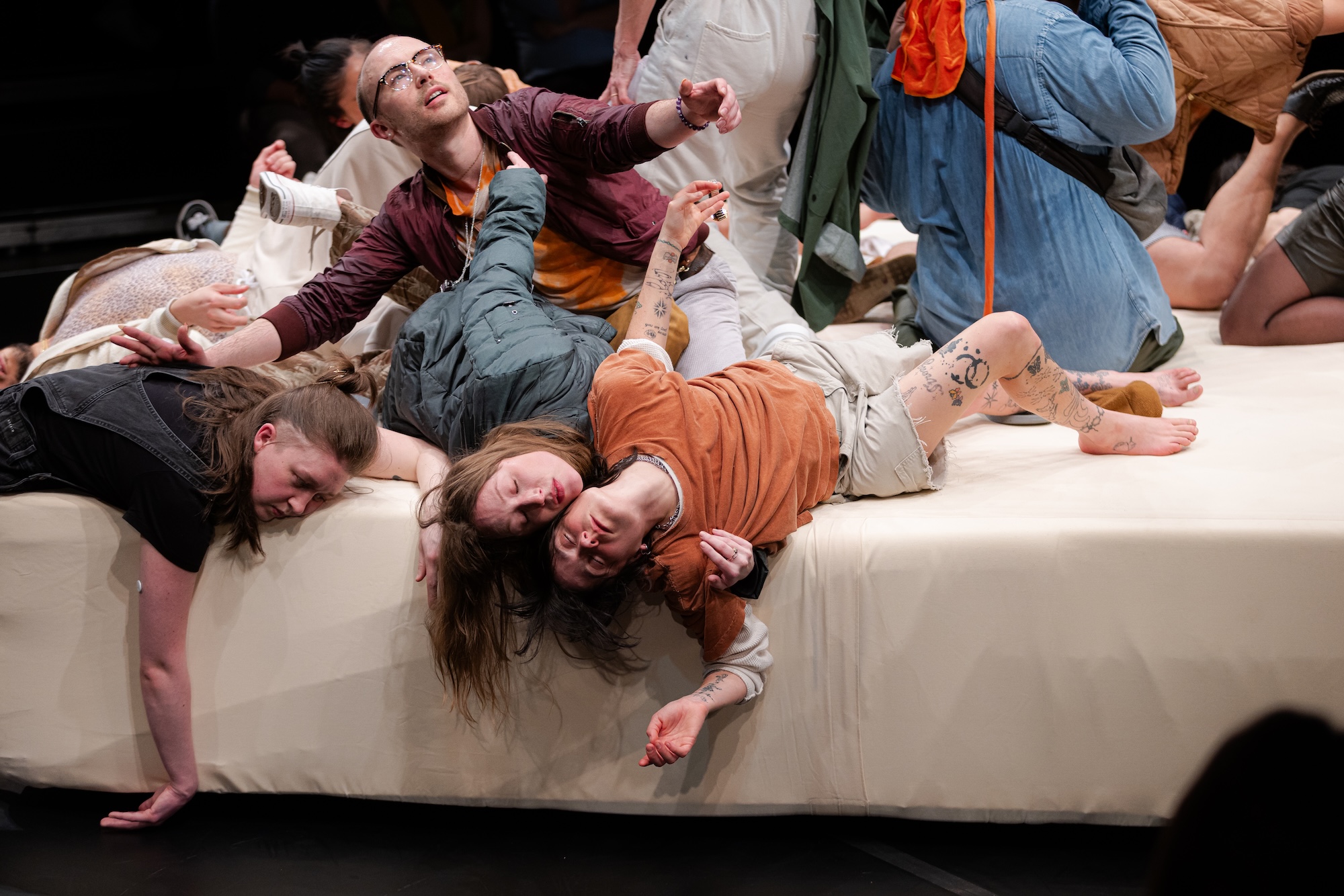 “Weathering” © Tiffany Bessire, OZ Arts, 2025
“Weathering” © Tiffany Bessire, OZ Arts, 2025
The festival’s diverse program also features an immersive sound performance YOU BALANCE directed by a sound engineer Toshihiko Kasai, SEKITA IKUKO’s new work under take exploring their “wide-angle lens theater” approach, and “mothers’ choral theater” by Utau-Hahagokoro, formed by actresses who became mothers. Contemporary media artist Shin Hanagata contributes a “public experiment” performance, while international highlights include the Japan premiere of Planet[wanderer] by a choreographer Damien Jalet and an artist Kohei Nawa, and Isabelle Huppert’s solo performance Mary Said What She Said, directed by pioneer of experimental theater Robert Wilson—part of 14 programs comprising the festival’s lineup.
Objects take center stage
Another exciting strand of the festival showcases object theater, a form of contemporary puppetry using everyday and abstract objects that has been captivating international audiences.
The program features Xavier Bobés’ Things easily forgotten and Handa Gote Research & Development’s puppet theater, The Third Hand. In addition, “Non-Performance Program” also includes object theater workshops by Ariel Doron.
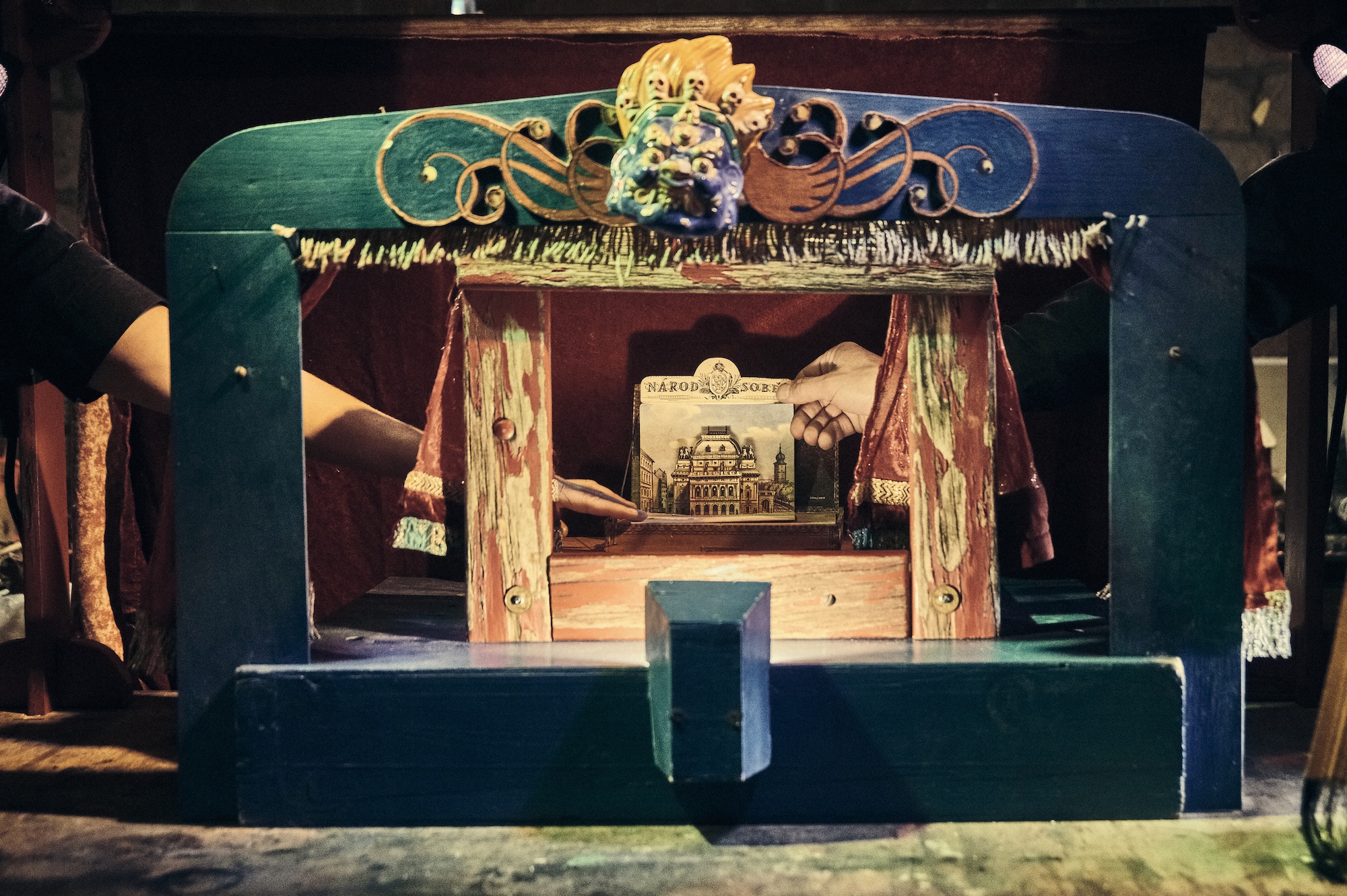 “The Third Hand” © Martin Špelda
“The Third Hand” © Martin Špelda
Yoko Yamaguchi, who curated the program and specializes in object theater research, explains the rise of the medium: “Object theater makes objects the protagonists—sometimes telling human stories through things, sometimes exploring the universe or deceased beings. The reason object theater is attracting worldwide attention is its overlap with post-human thinking—how we can view a world filled with war and environmental destruction from a perspective that moves beyond human-centrism. Japan traditionally has bunraku puppet theater, and nowadays, there’s a stuffed animal culture, so I think there are familiar aspects for Japan’s theater world as well. Object theater isn’t monolithic—the works are very diverse. With this lineup, you can see the most compelling aspects of object theater globally, including that diversity.”
Yamaguchi will also offer audiences a deeper dive into the medium through her lecture “A Quick Guide to Contemporary Object Theater,” part of the festival’s “Non-Performance Programs,” providing an essential primer for those curious about this emerging art form.
Beyond performance: workshops and cross-cultural exchange
The festival’s educational offerings also include an intensive workshop exploring the intersection of performance and digital technology. “Super Sober Shamanism: Considering Synchronization, Co-presence, and Mimesis through Theater and Technology,” developed in partnership with Civic Creative Base Tokyo [CCBT], promises to unpack how contemporary performance navigates our increasingly connected world. Meanwhile, “Where to Next? Residency for Watching and Talking” brings together emerging performing arts makers from across the globe for cross-cultural dialogue and creative exchange.
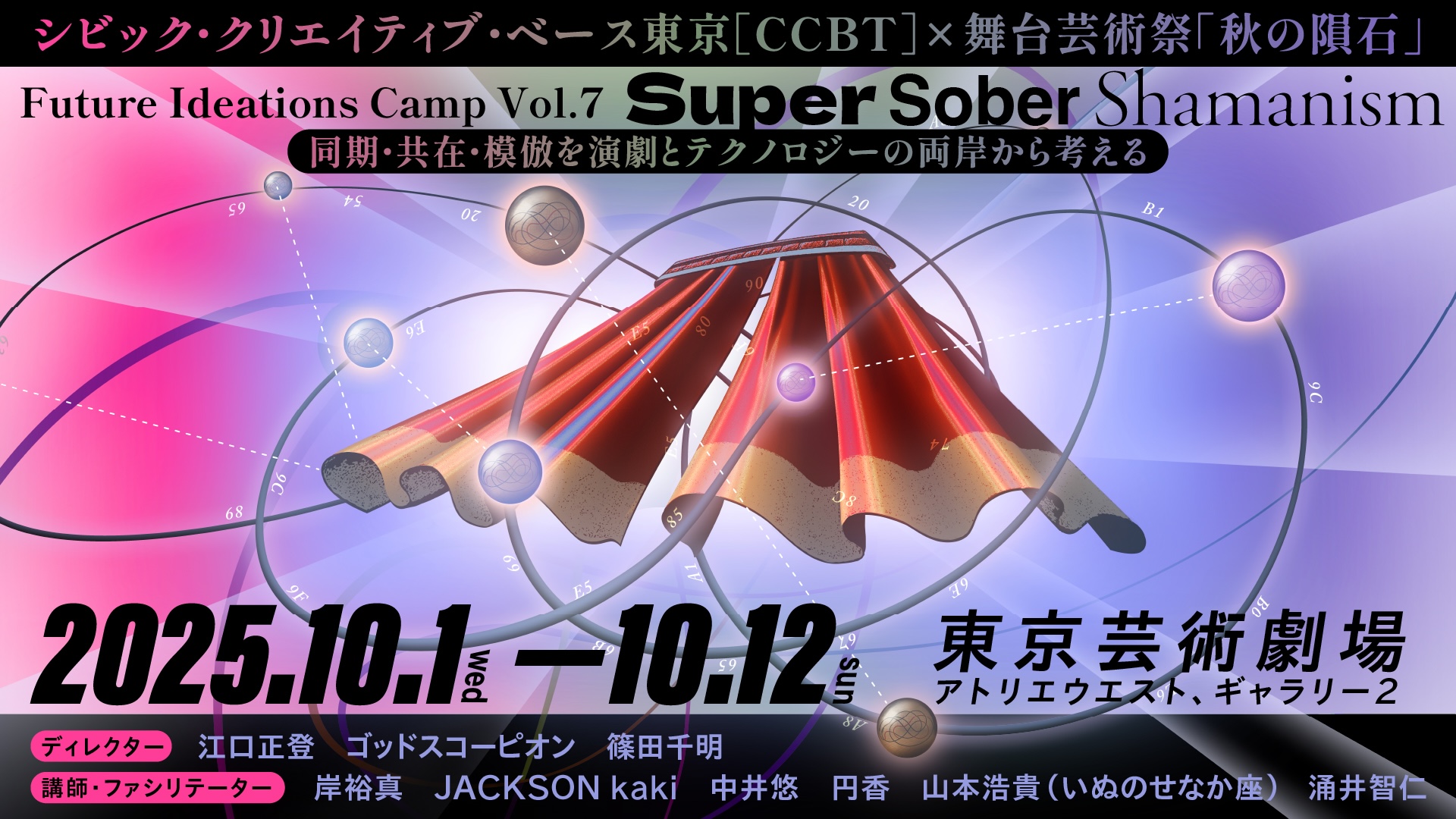 “Super Sober Shamanism: Considering Synchronization, Co-presence, and Mimesis through Theater and Technology”Redefining who belongs in the theater
“Super Sober Shamanism: Considering Synchronization, Co-presence, and Mimesis through Theater and Technology”Redefining who belongs in the theater
Central to the festival’s inclusive vision is “Welcome Galaxy,” a gathering space in the plaza in front of the Tokyo Metropolitan Theatre. More than just an information hub, this area with movable benches and tables welcomes families with strollers, offers food and drinks, and provides a stress-free environment for all visitors to gather and connect.
 “Welcome Galaxy” visual Photo by Tatsuhiko Nakagawa
“Welcome Galaxy” visual Photo by Tatsuhiko Nakagawa
The festival’s comprehensive “Hello and Welcome” system extends far beyond physical accessibility, incorporating childcare services, specialized workshops, and “relaxed performance” protocols that soften sound and lighting to accommodate anyone uncomfortable with traditional theater.
Autumn Meteorite represents more than accessibility—it’s a manifesto for theater’s potential, promising that art belongs to everyone. This approach reflects Okada’s philosophy: “Performing arts have historically excluded people who worry that their attendance might be disruptive. We are determined to change that. It is about a fundamental reimagining of what performing arts can be.”
Tickets go on sale on August 7 at 10:00, with early-bird discounts of 30% available during the initial sales period. For the complete program details, visit the official website.


AloJapan.com